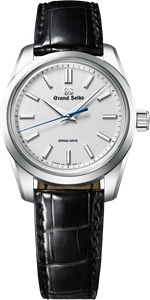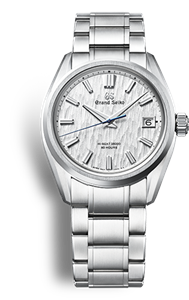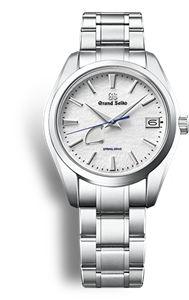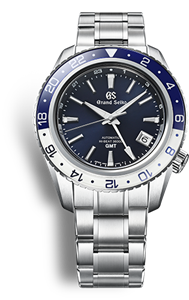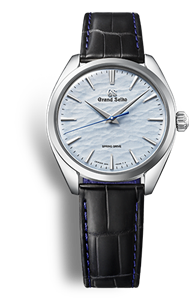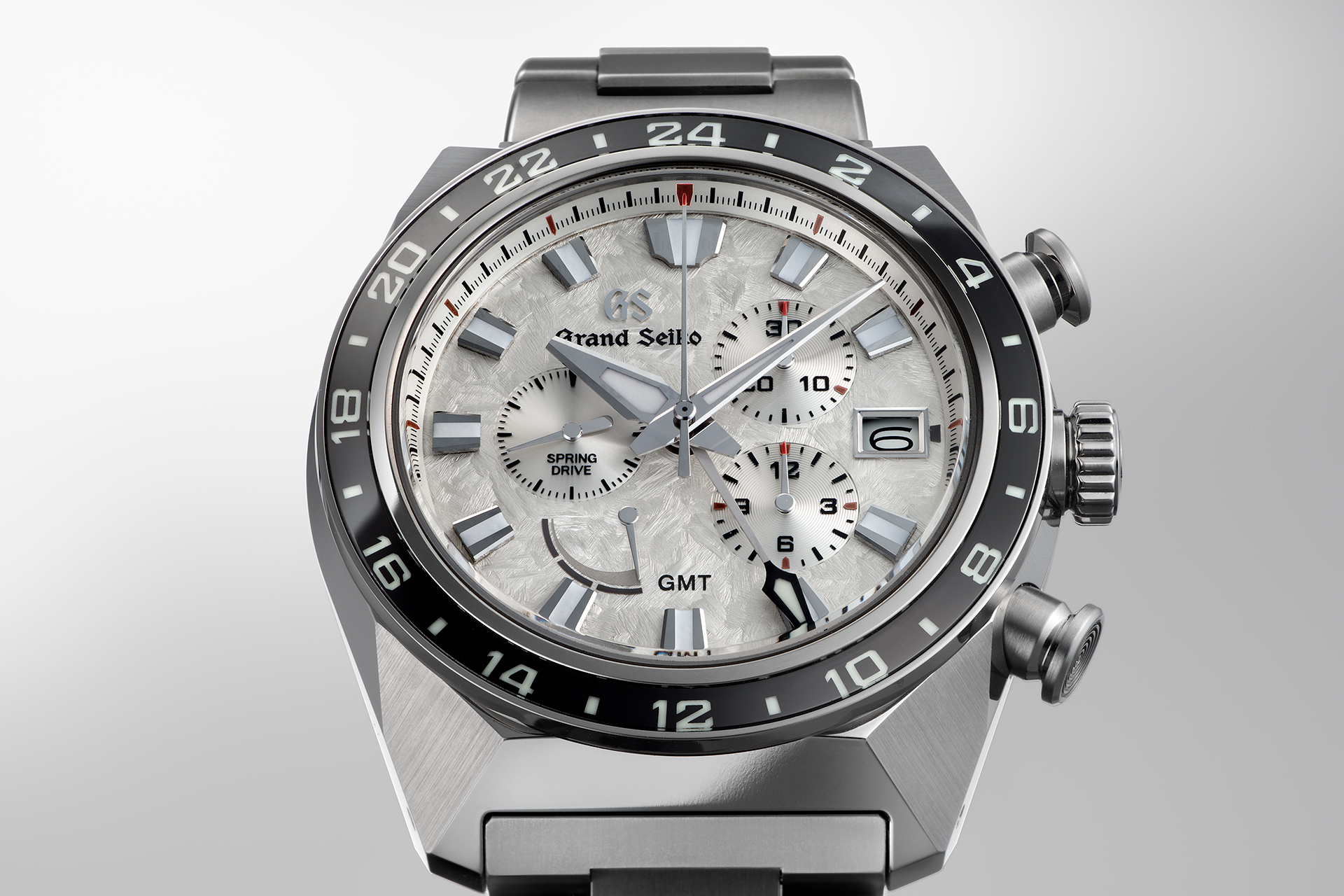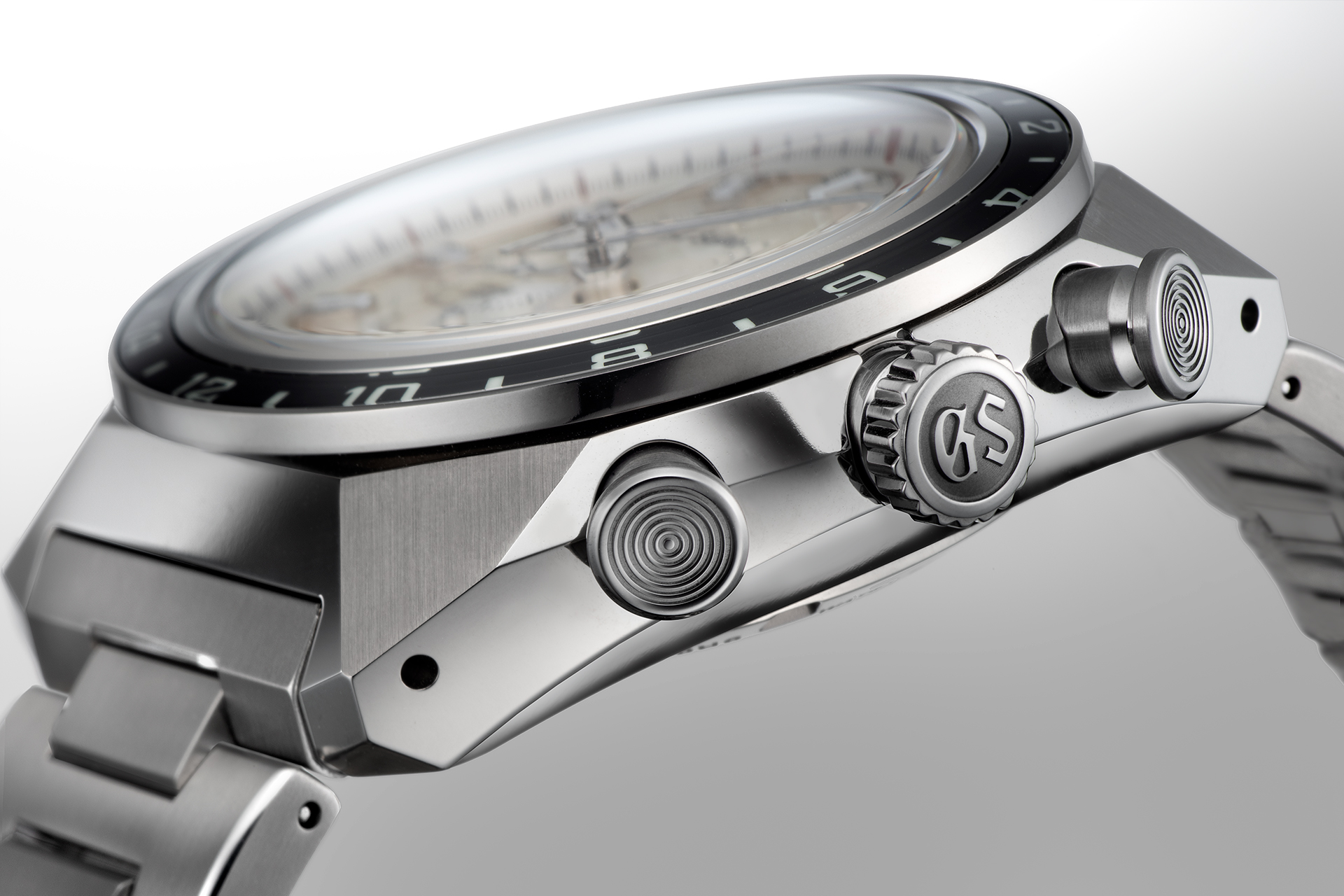Chapter 2
The Making of a High-precision, 72-hour Power Reserve Chronograph
Development of the Spring Drive Chronograph
The first Grand Seiko equipped with Spring Drive Caliber 9R65 was released in 2004, some 44 years after Suwa Seikosha developed the first (mechanical) Grand Seiko. Following that achievement, skilled engineers were charged with making a Spring Driven Chronograph. The engineer who led the development team was determined to create the best chronograph they could conceive of—something truly worthy of the Grand Seiko name. This would require a more complex mechanism, necessitating improvements to the fundamental performance of the Spring Drive itself if it was to be more than just another timepiece with a stopwatch function.
Spring Drive Chronograph’s sustained accuracy of ±15 seconds per month is maintained even during chronograph operation
With mechanical chronographs, the power reserve generally decreases when using the stopwatch, and the measurement accuracy becomes inconsistent as torque decreases. After a painstaking examination of the gear trains and even the teeth designs, the Spring Driven Chronograph development team sought to ensure sufficient torque for power generation by minimizing the mechanical load. This resulted in a power reserve of 72 hours even under increased load during chronograph operation—a groundbreaking achievement for a spring driven chronograph. What's particularly remarkable is that the Spring Drive Chronograph maintains impressive accuracy—±15 seconds per month (±1 second per day)—even during chronograph operation. Eventually, a Spring Drive Chronograph with a GMT function became possible, comprising over 400 parts within a space just 3 centimeters in diameter.

A transmission system that ensures that the seconds hand does not jump
In 2007, the Spring Drive Chronograph GMT Caliber 9R86 was released: a self-winding movement featuring a 72-hour power reserve and a 24-hour hand for dual time display. The 9R86 uses a column wheel for better stopwatch start/stop control. This system harnesses the force with which the user presses the pusher and efficiently converts it into operating force, thus mitigating unnecessary torque on the clutch or levers. Moreover, because the chronograph mechanism must not sacrifice the high accuracy of Spring Drive, the 9R86 uses a vertical clutch system for driving force transmission, which keeps the seconds hand from jumping when measurement begins by preventing shuddering when the stopwatch start button is pressed— an issue that easily occurs in a horizontal clutch system. The result is more accurate timekeeping. Indeed, Seiko was were the first in the world to adopt a vertical clutch for self-winding chronograph wristwatches in 1969. When it came to the Caliber 9R86, the material and shape of the clutch spring were adjusted for greater durability—a feat only made possible by a vertically integrated 'manufacture' setup.
Sport Collection SBGC253
SBGC253 boasts a striking design with lugs like solid metal block cuts, a case that evokes a lion’s claw and fits firmly on the wrist. The case and bracelet are made of lightweight High-Intensity Titanium, while a lion’s mane motif comes to life on a bright white dial with wide indexes and hour hand to create a powerful look. Its GMT hand and the 24-hour display on the ceramic bezel add a sporty touch, complemented by other features suited to a sports model, such as the Lumibrite coating on the indexes and hands for improved nighttime legibility, and a 20-bar water resistance.
The first Spring Drive Chronograph was just the opening chapter in an ongoing story: the evolution of the ultimate fusion of mechanical and quartz watch technologies.
